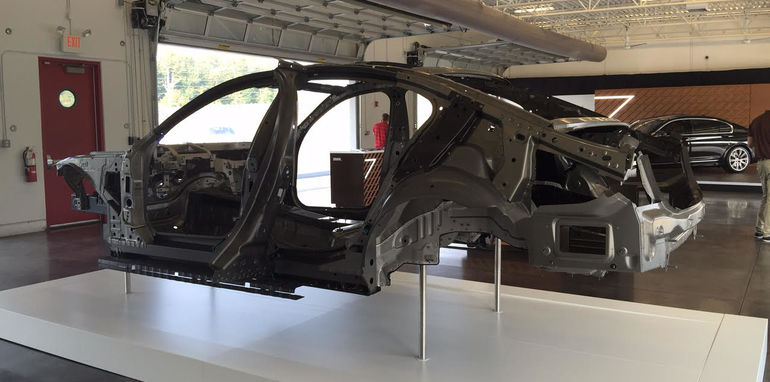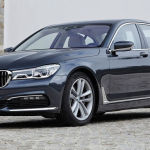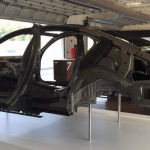The carbonfibre core of the new BMW 7 Series signifies the German brand is expanding expertise and confidence in bringing the high-strength but ultra-lightweight material to more of its models in the near future.
Speaking to CarAdvice at the international launch of the new BMW 7 series in New York, Florian Schek, BMW’S head of lightweight design and vehicle weight, said he believes BMW is now leading the carbon integration process in the automotive industry.
“From our point of view, there is currently nobody worldwide who is able to do what we do with carbonfibre in automotive applications.” Schek said.
The application of a carbon core (13 carbonfibre pieces delicately placed in the body) in the new 7 Series has seen a 40 kg weight reduction compared to the old car, despite numerous additional components added for rigidity and safety, making the weight saving far greater in a true comparison.
BMW’s new carbon core architecture is expected to filter down to other models, including the next-generation BMW 5 Series due in 2017. “This is a new architecture coming up, [the new 7 Series] is the leading car of the new architecture.”
Scheck says that despite low volume manufacturers, such as Pagani, creating full carbon monocoques, BMW is the only automotive brand that knows how to deal with the material on a large scale.
“We are doing, 60 to 70,000 7 Series in a year, so you are doing 150 cars a day, so its not like we are putting some carbonfibre matt somewhere and gluing it.”
The difference between the use of carbonfibre structures in BMWs compared to other cars comes down to its coreless technology.
“It’s a braiding technology, the fibre is woven around the core and first, this technique is not completely new, some of our competitors do something like that, but this is the first piece that is core less, so we got rid of the core after the fibre is woven around it. It’s one piece [from A] to the C pillar. It’s one piece that is varied in thickness in material and the cross section according to the level of force we need in certain areas. Usually you leave the core inside, but if you leave the core inside you lose some of the weight advantage. We found a way to get the core out of the final woven structure before it goes into the moulding. It’s empty in the middle.”
The process by which this happens remains a BMW secret, with Schek even admitting that most at BMW are not aware of the finer details.
“Even in BMW there are only a limited number of guys that really know about it and the area where it is produced is high security, you couldn’t get in there.”
Schek was tight-lipped about the carbon core application to future models such as the 5 series, only stating that the company’s expertise now allow for it to happen.
“We are having a toolbox of concepts, materials and techniques, how we can do our cars that are coming up, and like the 7 series and its special requirements, we use elements from that tool box especially dedicated to the car. If it makes sense to have carbon fibre in there, it will be in there.”
The use of carbon fibre in the 7 Series came from learning’s had from the i3 and i8, which use a full carbon body, a feature that wouldn’t have worked entirely for the 7 Series target market.
“People always ask why didn’t you do a full carbon body as you did in i3 or i8? I can tell you why, if you put the floor panel in a full carbon concept, you would suffer from acoustic insulation that carbon causes. Carbon is lighter. A customer in a 7 series will often sit in the second row and he wants to have top of the range acoustic comfort, riding comfort, interior space and so on, so we had to come up with a [compromise] concept that underlines the requirements we have and does not affect them in a bad way.”














